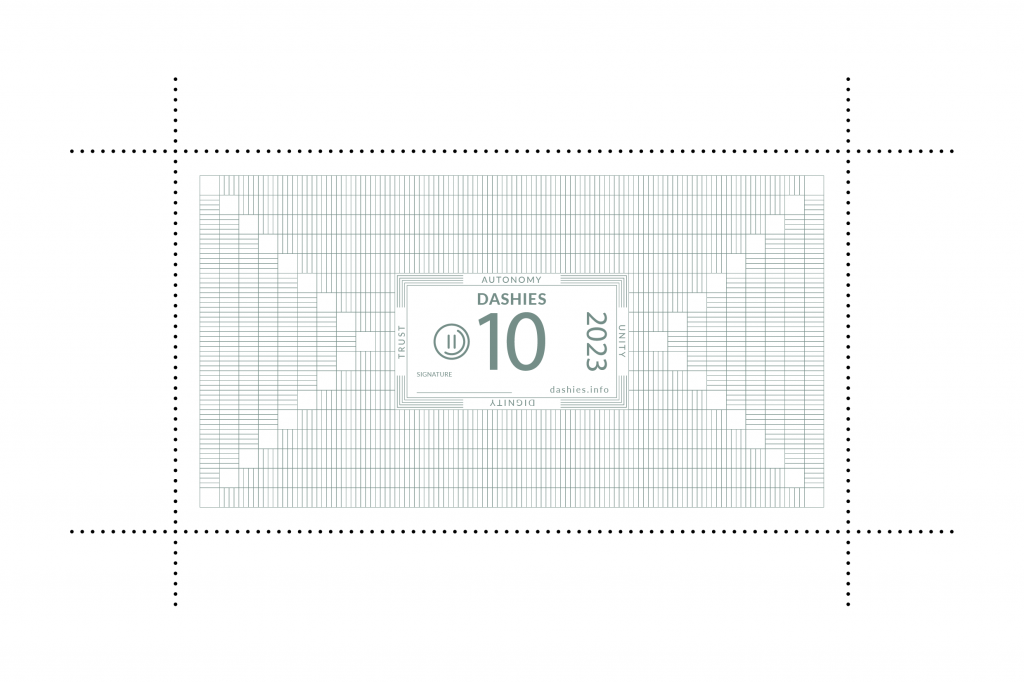What is money, actually?
The Bundesbank says: “We encounter money everywhere in our daily lives, as banknotes and coins, as book money in bank accounts or as digital money on cards and smartphones. What matters is not what material or form money takes. What matters is that it is generally accepted as a means of payment.”
In essence, money is merely a medium that fulfils certain functions: It serves as a medium of exchange, a unit of account and a store of value. And anything that fulfils these functions is money.
This is shown by the history of money: both notes and coins, as well as shells, furs, cigarettes, and precious metals like gold and silver served as money.
However, money can only fulfil its functions if people trust it. They have to trust that their money will also be accepted as a medium of exchange in the future. And in particular, they must trust that it will not lose value until then, i.e. that it will remain stable in price.
Monetary value
= tangible value?
Originally, coins corresponded to their metal value. The weight in gold or silver established their purchasing power.
Over time, coins with low metal value and banknotes replaced these first coins. However, most currencies were still tied to the so-called gold standard for a long time. For example, the Reichsbank was legally obliged to exchange the banknotes it issued for gold at a fixed rate.
The final decoupling of money from a real existing equivalent occurred in 1971 with the abolition of the gold standard by Richard Nixon.
Central banks have sovereignty over the money in circulation. Today, central banks focus on three main goals that have developed over time: price stability, economic equilibrium and financial stability.
O cursed hunger for gold.
The concept of money has remained the same over time: money is equivalent to a tangible asset – at least in theory, although the ratio fluctuates.
Since the decoupling of real counter-values, more and more money is in circulation worldwide. Mostly as a book value, digitally or even just as an idea, such as with cryptocurrencies. Cash may soon no longer exist at all.
We experienced the downside of this development during stock market crashes and financial crises through inflation and indebtedness. The insane accumulation of material assets by a few, the concentration of power through money, the dependence on state institutions, as well as great poverty among large parts of the population, are promoted by the material value principle of money. Far more money can be earned with money than through work. Those who have enough money to make their money “work” for them will soon have even more money. And those who have a lot of money have the power to create rules that serve their own interests.
Time is (also) money
What if instead of a material value we define another value as a measure of money? What if the time required to produce it defines the value of money?
Everyone has an equal amount of time. Time is a limited resource. As employees, we sell our working time for wages, i.e. money. So, wouldn’t it make sense to use working time as a medium of exchange?
Of course, others have had this idea before. However, until now, people have always taken the indirect route of offering services in exchange or measuring the value of a good according to how much time was needed to produce it. Paper bills, or scraps of paper with no intrinsic value, still serve as currency.
To fully unleash the power of time as a medium of exchange, we must make it tangible, transfer the value of time to money itself. And here’s how:
Cash = Dash
Our new currency unit is the Dash. It corresponds to one minute of work. Anyone can create Dashies themselves by spending time creating the money. The task is to fill a defined number of fields on a piece of paper with strokes. Five minutes of filling in squares makes five dashies, ten minutes ten dashies, one hour 60 dashies, etc.

Dashies are small works of art
Each bill is unique and therefore particularly forgery-proof. It bears the creator’s personal handwriting, as well as their signature. At the same time, everyone can only produce a limited number of notes, even those who are greedy and have a special talent for drawing lines quickly will need quite a while to do so. Therefore, a material value is unquestionably obtained, even in comparison to existing money.

Can the new currency work?
Acceptance is a prerequisite for Dashies to function. If enough people trust that Dashies are a valid and suitable as a means of exchange, the introduction can be successful. So, it is entirely up to us whether we allow time as a currency.
And this is where the experiment begins. How open-minded are we as a society towards new ideas? Do we see opportunities or rather risks? Are we prepared to go new ways, to question existing systems? Are we capable of having an open discussion? Do we enjoy trying new things? Or are we trapped in a system that may not always be good for us, but offers a certain degree of – even if only perceived – security?
Try it out
Create your own cash, independent of banks and the state! Download the template and fill it out with your individual strokes.
Joining the conversation
How do you like the idea? What advantages and disadvantages do you see? What experiences have you had?
